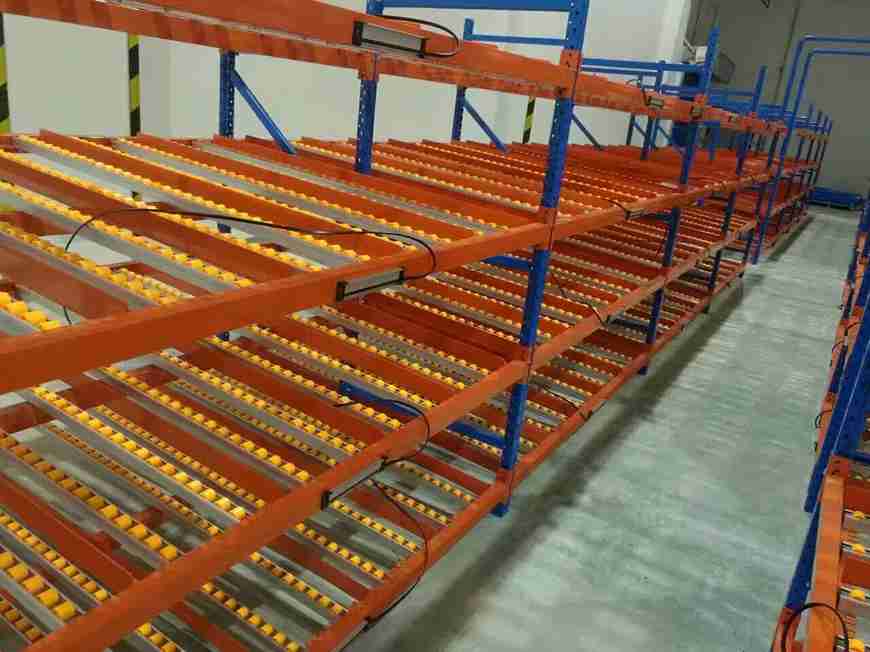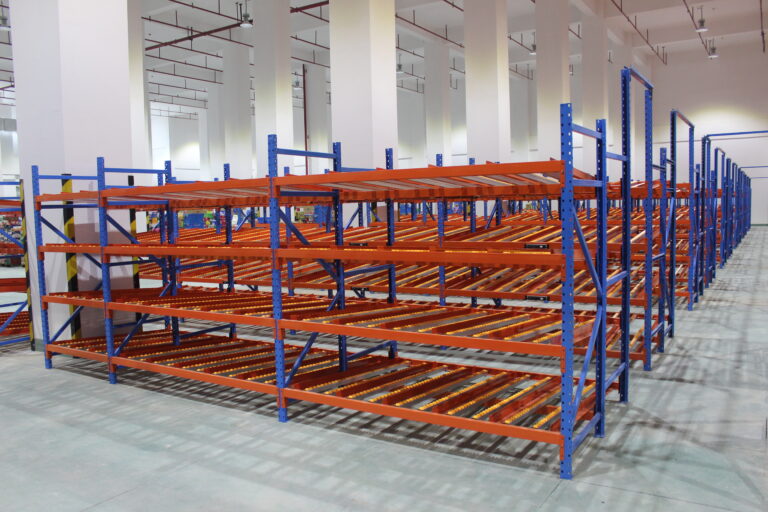📐 "First 50 Enterprise Queries Get Custom 3D Warehouse Design" Plan

Introduction: How Mobile Racking Systems Transform Storage Operations
In an era where every square foot of warehouse space carries a premium, mobile racking systems have emerged as the gold standard for high-density storage. Unlike traditional static shelving that wastes valuable floor space with fixed aisles, these innovative systems dynamically compress storage lanes, creating unparalleled space efficiency without sacrificing accessibility.
For warehouse managers, archivists, and retail operations specialists, implementing a mobile racking system isn’t just about storage—it’s a strategic move that reduces real estate costs, improves workflow efficiency, and future-proofs operations against growing inventory demands. This deep-dive exploration reveals why leading Fortune 500 companies and growing SMEs alike are transitioning to mobile racking solutions as their primary storage methodology.

H1: Mobile Racking Systems Explained: Engineering Meets Efficiency
H2: The Mechanical Genius Behind Mobile Racking Systems
At their core, mobile racking systems represent a paradigm shift in storage technology. Each bay of shelving or pallet racking mounts onto heavy-duty carriages that glide along precision-engineered floor tracks. When access isn’t required, the entire system compresses like an accordion, eliminating up to 85% of wasted aisle space characteristic of conventional setups.
H3: Three Operational Modes of Mobile Racking Systems
-
Manual Push-Button Systems: Ideal for smaller operations, these units move via hand-crank or push mechanisms—perfect for archives or specialty retail backrooms.
-
Semi-Automated Systems: Featuring electric assist motors, these mid-range mobile racking solutions reduce physical strain while maintaining cost efficiency.
-
Fully Automated AS/RS Integration: The pinnacle of mobile racking technology, these systems sync with warehouse management software for hands-free operation.
H1: Quantifiable Advantages of Mobile Racking Systems
H2: Space Utilization: From 40% to 85% Efficiency Overnight
Where traditional static racking typically utilizes just 40-50% of available cubic space, a properly configured mobile racking system achieves 80-85% density by implementing these space-saving features:
-
Dynamic Aisle Allocation: Only one working aisle exists at any time
-
Vertical Optimization: Compatible with very narrow aisle (VNA) forklifts
-
Custom Compression Ratios: Adjustable based on inventory turnover rates
H2: The Hidden Cost Savings of Mobile Racking Systems
Beyond the obvious space benefits, mobile racking solutions deliver measurable financial impacts:
| Cost Factor | Static Racking | Mobile Racking System |
|---|---|---|
| Real Estate Needed | 10,000 sq ft | 5,500 sq ft |
| Energy Costs | Higher (more lighting/HVAC) | Reduced footprint cuts expenses |
| Labor Productivity | 65 picks/hr | 85+ picks/hr |
H2: Safety Innovations in Modern Mobile Racking
Contemporary mobile racking systems incorporate multiple fail-safes:
-
Infrared Motion Detection: Halts movement when obstructions are sensed
-
Anti-Tip Engineering: Low center of gravity prevents seismic shifting
-
Emergency Release Bars: Immediate manual override capabilities
H1: Industry-Specific Applications of Mobile Racking Systems
H2: Pharmaceutical & Medical Supply Warehousing
The precision requirements of drug storage make mobile racking systems ideal for:
-
Lot-controlled environments needing strict FIFO rotation
-
Climate-controlled zones where space is at a premium
-
Regulatory-compliant layouts for FDA inspections
H2: Automotive Parts Distribution
Tier 1 suppliers utilize mobile racking solutions to:
-
Store bulky but lightweight components (e.g., bumpers, trim)
-
Facilitate just-in-time inventory management
-
Accommodate seasonal demand fluctuations
H2: National Archives & Legal Document Storage
Leading institutions deploy mobile racking systems for:
-
Compact storage of case files and historical documents
-
Fire-rated configurations meeting UL standards
-
Digitization workflow integration
H1: The Procurement Decision Matrix for Mobile Racking Systems
H2: Load Capacity Considerations
Mobile racking systems are engineered for diverse weight requirements:
| System Type | Max Capacity Per Bay | Ideal Use Case |
|---|---|---|
| Light-Duty | 800 lbs | Document storage |
| Medium-Duty | 2,500 lbs | Retail inventory |
| Heavy-Duty | 12,000+ lbs | Industrial parts |
H2: The Automation Spectrum
Choosing between manual and automated mobile racking solutions involves evaluating:
-
Frequency of access (daily vs. weekly retrieval)
-
Available capital expenditure
-
Future scalability needs
H2: Customization Options That Matter
Premium mobile racking system providers offer:
-
Modular width adjustments (24″ to 60″ bays)
-
Specialized surface treatments for corrosive environments
-
Integrated labeling systems for barcode/RFID compatibility
H1: Installation Insights for Mobile Racking Systems
H2: The Criticality of Professional Site Assessment
Before deploying a mobile racking system, certified engineers should evaluate:
-
Floor load ratings and slab thickness
-
Seismic zone requirements
-
HVAC and sprinkler system clearances
H2: The Phased Implementation Approach
Smart adopters of mobile racking solutions often:
-
Pilot test a single zone
-
Train superusers on operation
-
Scale across the facility
H1: The ROI Timeline of Mobile Racking Systems
H2: Short-Term vs. Long-Term Value Creation
While the upfront cost of mobile racking systems exceeds static alternatives, the break-even point typically occurs within:
-
18-24 months for commercial operations
-
36 months for specialized cold storage
H2: The Intangible Benefits Factor
Beyond hard metrics, mobile racking solutions deliver:
-
Enhanced workforce morale from ergonomic improvements
-
Brand prestige from cutting-edge facilities
-
Insurance premium reductions from superior safety
H1: The Next Evolution of Mobile Racking Technology
H2: AI-Powered Predictive Movement
Emerging mobile racking systems now incorporate:
-
Machine learning algorithms that anticipate retrieval patterns
-
Automated inventory rebalancing during off-peak hours
H2: Sustainable Engineering Breakthroughs
The latest mobile racking solutions feature:
-
Regenerative braking systems that feed energy back into the grid
-
Recycled alloy construction with lower carbon footprints
Conclusion: Why Mobile Racking Systems Represent the Future of Storage
The operational calculus for modern warehouses has irrevocably shifted. With real estate costs soaring and efficiency demands intensifying, mobile racking systems transition from being an innovative option to an operational necessity. Facilities implementing these systems consistently report 30-50% gains in storage capacity, 20% improvements in picking speeds, and 15-25% reductions in operational costs—metrics that directly impact bottom lines.
For organizations serious about optimizing their storage infrastructure, the question is no longer whether to adopt mobile racking technology, but how quickly they can transition. The competitive advantage gained through these systems often proves decisive in today’s logistics landscape.
FAQs: Expert Answers on Mobile Racking Systems
1. How does seismic activity affect mobile racking system stability?
Modern mobile racking solutions incorporate seismic bracing and inertial dampeners meeting ICC-ES AC156 standards for zones up to Seismic Design Category E.
2. Can mobile racking systems integrate with existing WMS platforms?
Yes, leading mobile racking system providers offer API integrations with major warehouse management systems like SAP EWM and Oracle WMS.
3. What maintenance routines maximize mobile racking lifespan?
Bi-annual professional inspections combined with monthly track lubrication typically extend mobile racking system longevity beyond 25 years.
4. Are there mobile racking configurations for irregularly shaped facilities?
Custom curved track systems can accommodate radial warehouse layouts while maintaining 85%+ space utilization rates.
5. How do mobile racking systems impact insurance underwriting?
Many carriers offer 5-15% premium reductions for facilities using UL-certified mobile racking solutions due to their superior safety profiles.
Industry-Leading Resources:
For operations requiring maximum storage density without compromising accessibility, mobile racking systems deliver an unbeatable combination of efficiency, safety, and long-term value. The future of smart warehousing begins with this transformative technology.




